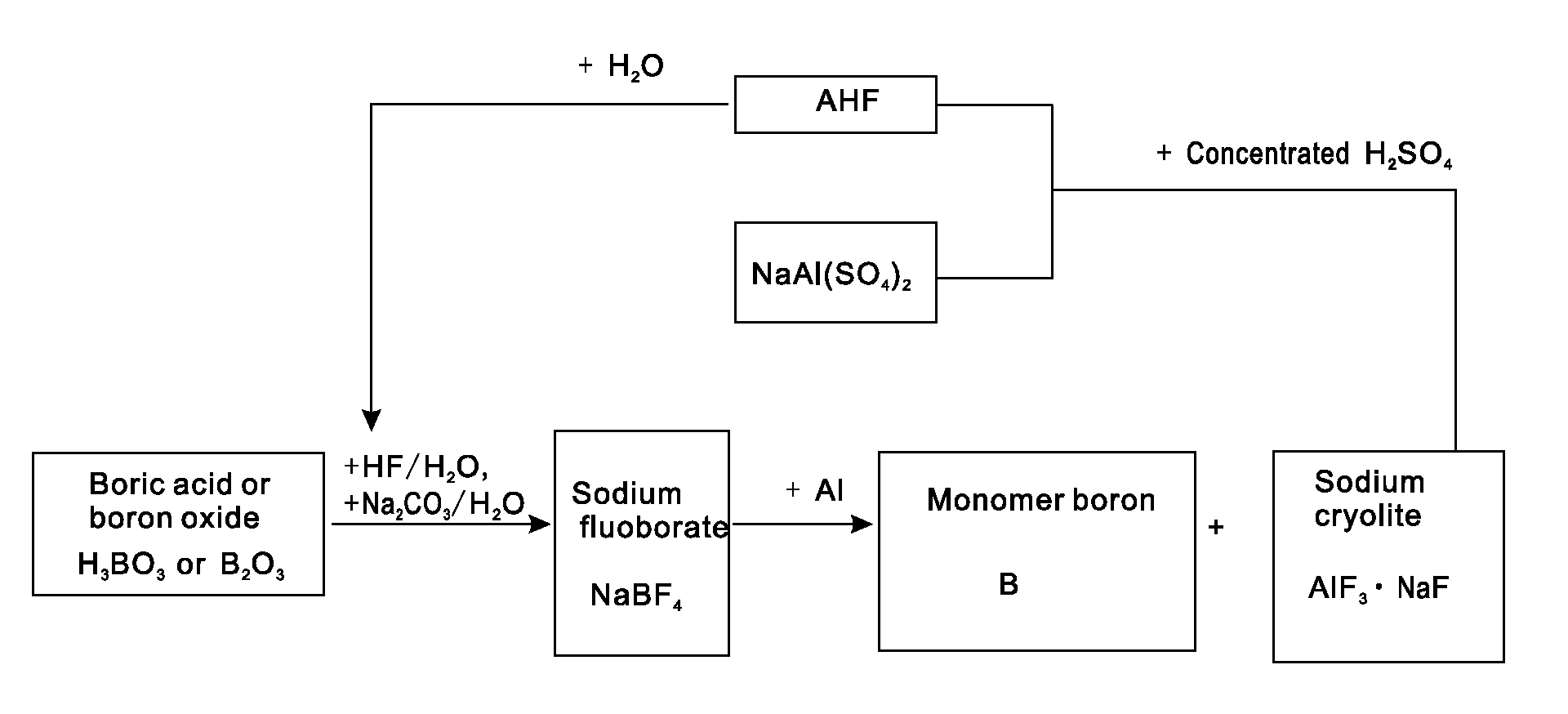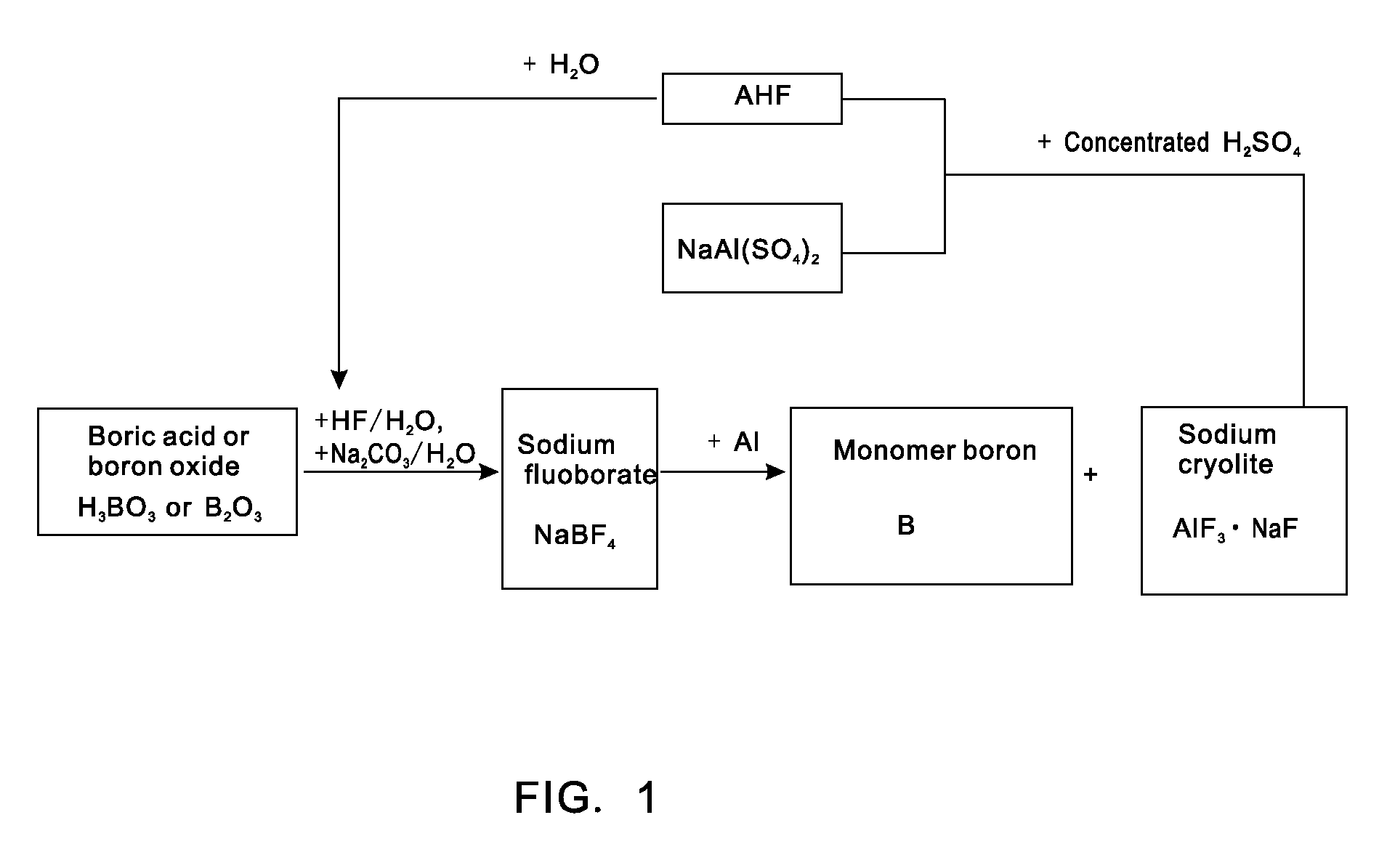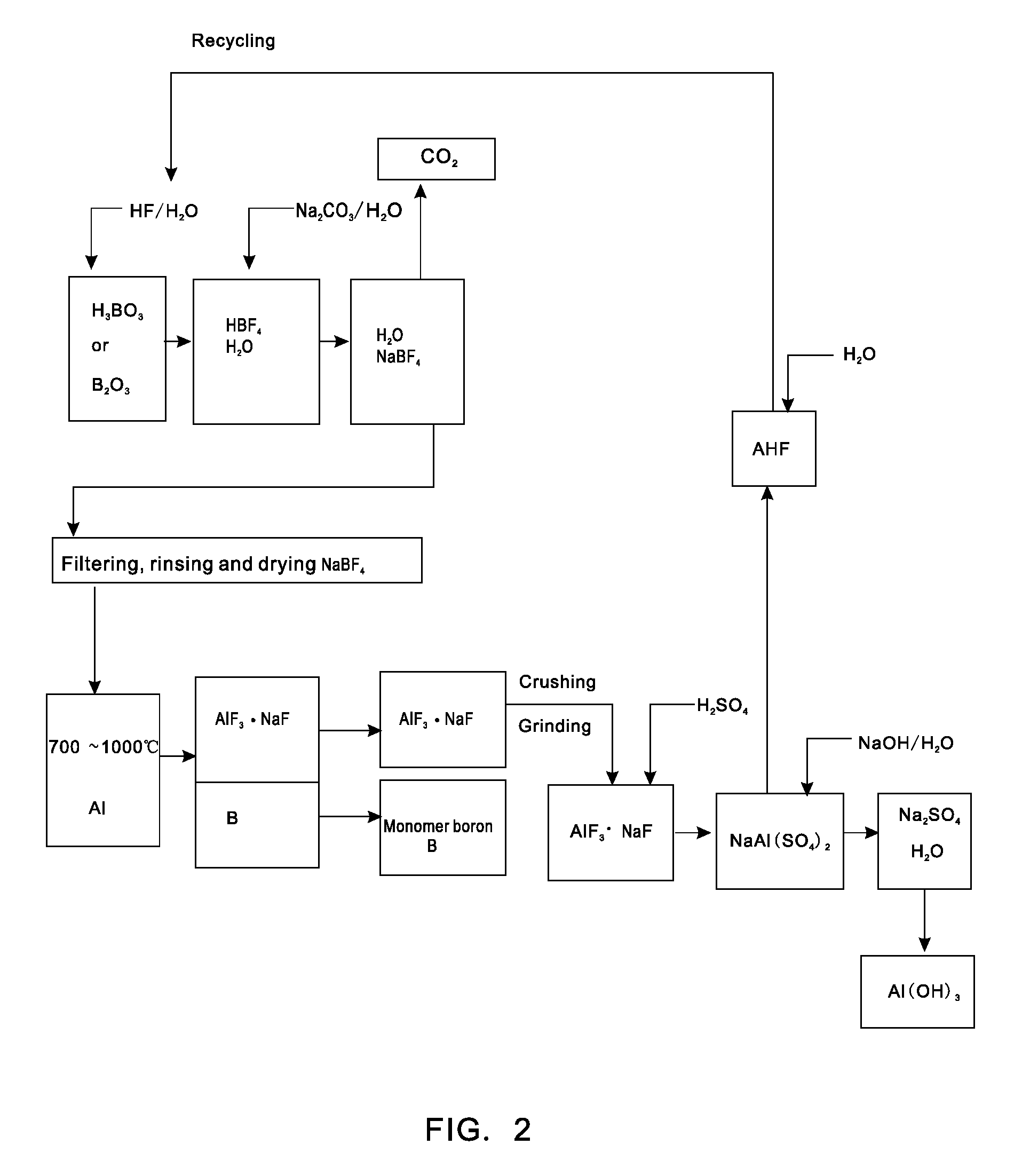Method for cyclically preparing elemental boron and coproducing sodium cryolite using sodium fluoborate as intermediate material
a technology of sodium fluoborate and elemental boron, which is applied in the field of cyclically preparing elemental boron and coproducing lowmolecularratio sodium cryolite using sodium fluoborate as an intermediate material, can solve the problems of low yield rate, high preparation cost, and less than 90% of the product obtained, and achieves simple preparation process and high product yield. , the effect of prolonging the life of fluorite resources
- Summary
- Abstract
- Description
- Claims
- Application Information
AI Technical Summary
Benefits of technology
Problems solved by technology
Method used
Image
Examples
embodiment 1
[0021]Putting 0.62 tons of boric acid and 0.35 tons of boron oxide into a reaction kettle; adding 4 tons of 20% (mass percent) hydrofluoric acid in the reaction kettle to react with the boric acid or boron oxide at a temperature of 100 DEG C to form fluoboric acid; adding 3 tons of 20% (mass percent) sodium carbonate aqueous solution to the fluoboric acid to enable a reaction to form sodium fluoborate; concentrating, crystallizing and rinsing the sodium fluoborate to obtain 0.95 tons of intermediate material sodium fluoborate; putting the 0.95 tons of dried sodium fluoborate into another reactor, injecting argon to the reactor after vacuumizing, heating the reactor to a temperature of 700 DEG C, dripping molten aluminium into the reactor slowly in accordance with a reaction ratio and stirring quickly, wherein the materials are completely reacted after 5 hours and elemental boron and sodium cryolite are generated; extracting molten liquid sodium cryolite, crushing the molten liquid s...
embodiment 2
[0022]Putting 0.62 tons of boric acid and 0.35 tons of boron oxide into a reaction kettle; adding 4 tons of 20% (mass percent) hydrofluoric acid to the reaction kettle to react with the boric acid or boron oxide at a temperature of 100 DEG C to form fluoboric acid; adding 3 tons of 20% (mass percent) sodium carbonate aqueous solution to the fluoboric acid to enable a reaction to form sodium fluoborate; concentrating, crystallizing and rinsing the sodium fluoborate to obtain 0.95 tons of intermediate material sodium fluoborate; weighing aluminium in accordance with a reaction ratio and putting the aluminium into another reactor, injecting argon to the reactor after vacuumizing, heating the reactor to a temperature of 700 DEG C, adding the 0.95 tons of dried and flowable sodium fluoborate in the reactor in a measurable flowing way and stirring quickly, wherein the materials are completely reacted after 5 hours and elemental boron and sodium cryolite are generated; extracting molten li...
PUM
| Property | Measurement | Unit |
|---|---|---|
| temperature | aaaaa | aaaaa |
| temperature | aaaaa | aaaaa |
| temperature | aaaaa | aaaaa |
Abstract
Description
Claims
Application Information
 Login to View More
Login to View More - R&D
- Intellectual Property
- Life Sciences
- Materials
- Tech Scout
- Unparalleled Data Quality
- Higher Quality Content
- 60% Fewer Hallucinations
Browse by: Latest US Patents, China's latest patents, Technical Efficacy Thesaurus, Application Domain, Technology Topic, Popular Technical Reports.
© 2025 PatSnap. All rights reserved.Legal|Privacy policy|Modern Slavery Act Transparency Statement|Sitemap|About US| Contact US: help@patsnap.com



